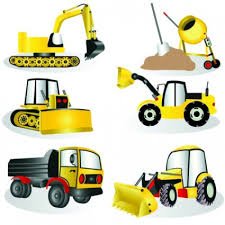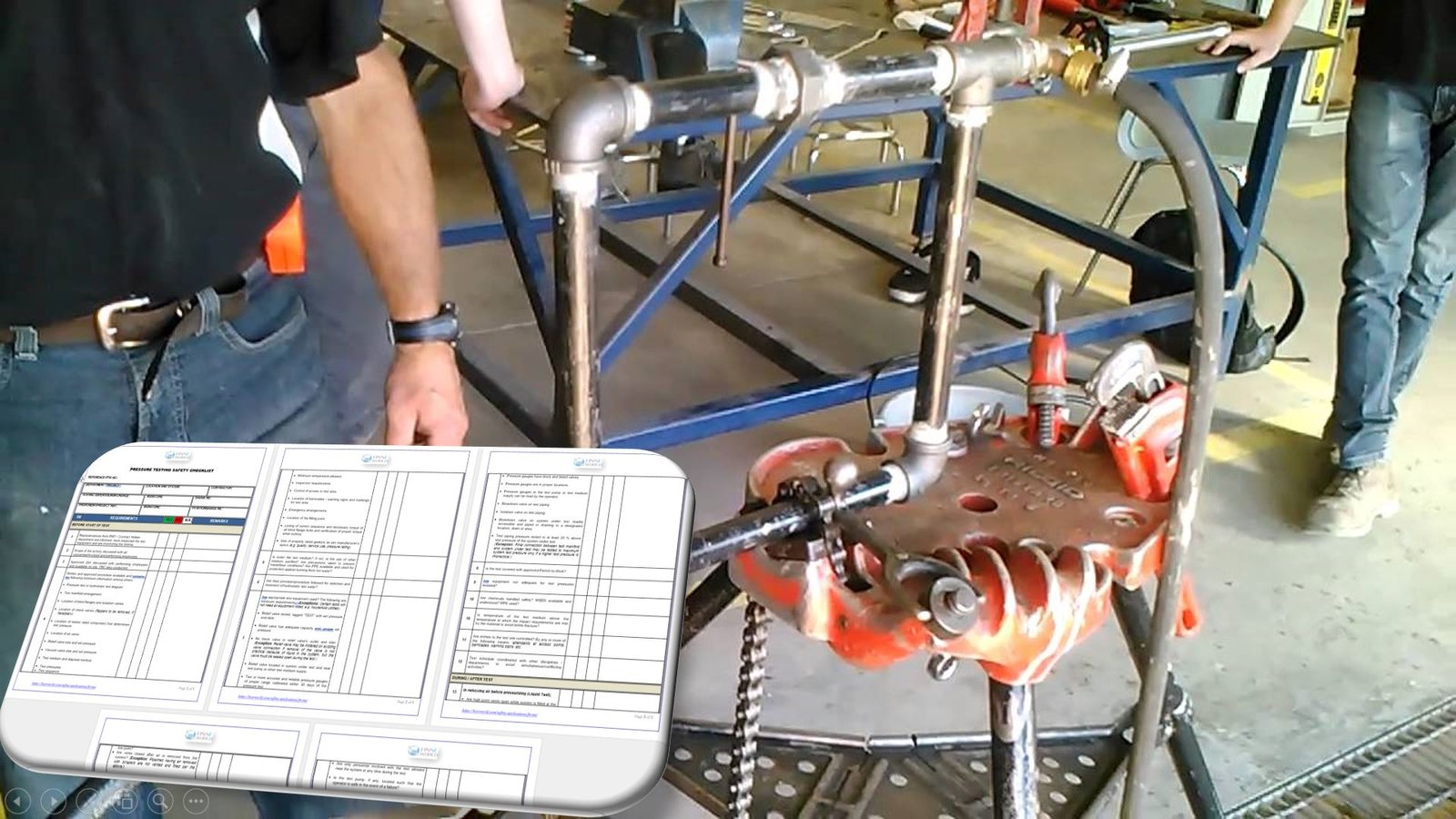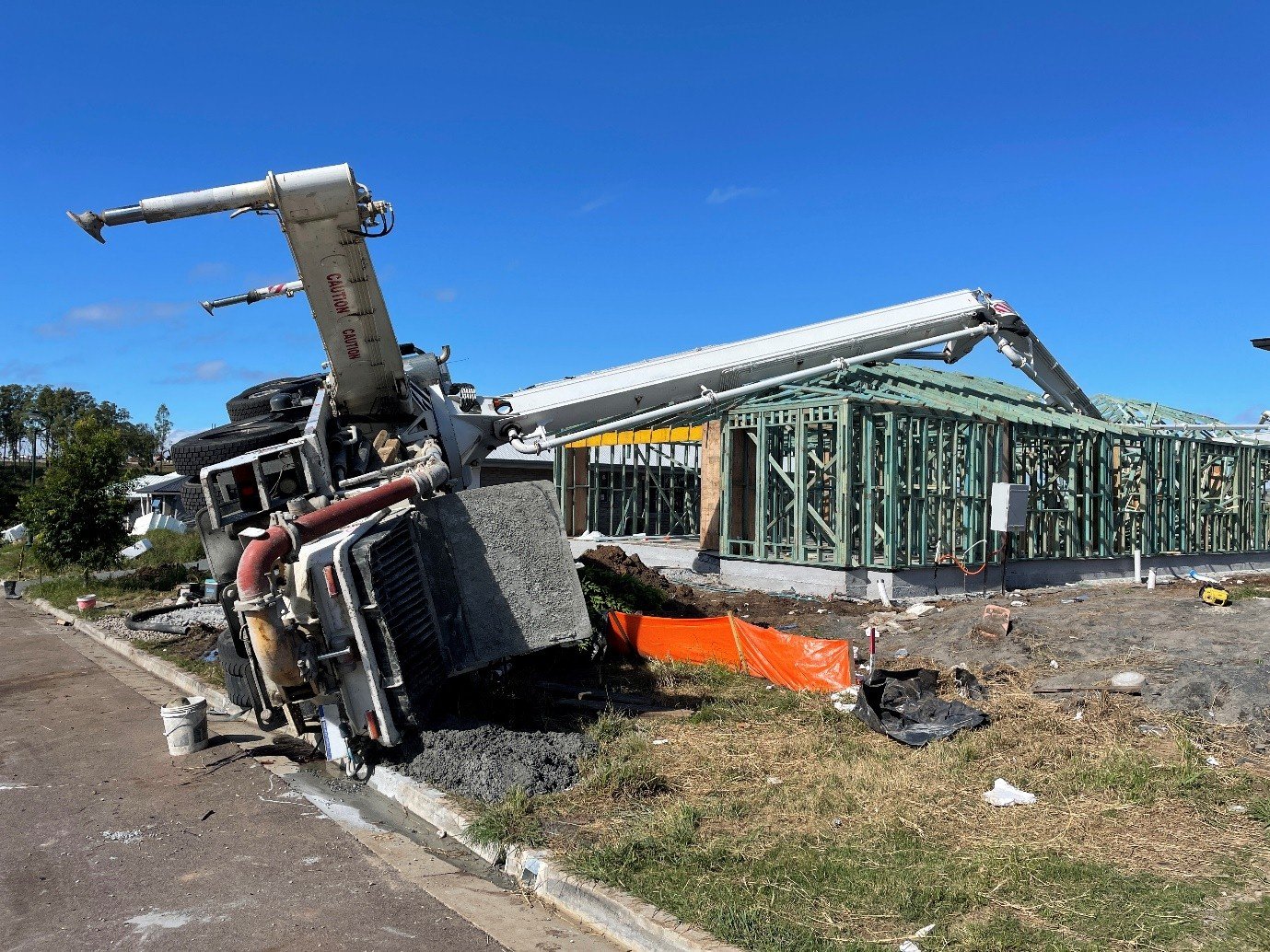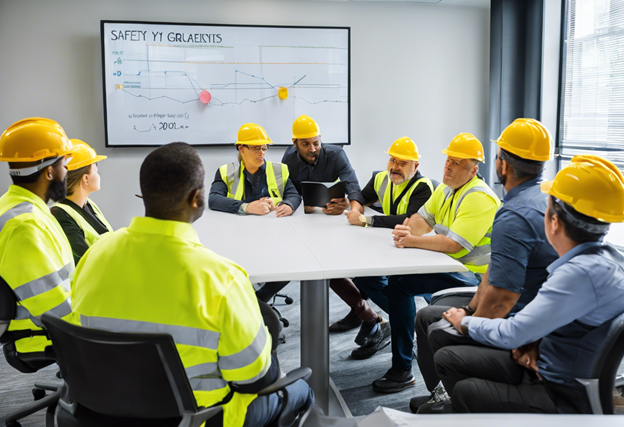This guide line enable you To establish minimum requirements regarding the site tools and Equipment inspection are available for use or used at construction site work places and to clarify the responsibilities for the provision of construction plant and equipment to the work site and to ensure that it is maintained in a safe operable condition throughout the Project. The prime purpose of the inspection is to provide users with safe and reliable construction equipment and tools, and to prevent incidents caused by or related to equipment and tools
what in this article?

Guide line for Site Equipment and Tools Inspection Procedure during construction phase
General
The responsible Contractor shall have a written description of the Inspection program, including specific procedures adopted by the contractor available at the project site for inspection that are in alignment with this procedure.
The Contractor will designate in writing, one or more Competent Persons to implement the program.
CLASSIFICATION OF EQUIPMENT
Class 1: Specialist Equipment
Specialist equipment shall mean equipment with long mobilization periods. This equipment would cause serious schedule disruption if defects were discovered during the initial inspection.
This equipment shall include but not be limited to all specialist equipment such as cranes; fork lifts specialist trailers, etc.
The Subcontractor Site Manager shall arrange for a competent inspector to carry out this initial inspection either at the equipment point of origin or at site prior
to entry.
Class 2: Major General Construction Equipment
This equipment shall include but not be limited to all equipment such as Trucks, Tractors, excavators, Concrete Batch Plant(s), Asphalt Pavers, Large Electrical Generators, Air Compressors, and Welding Equipment etc.
Competent Person :A Contractor/Subcontractor person capable of identifying existing and predictable hazards in the surroundings or working conditions that are unsanitary, hazardous, or dangerous to all personnel and who has authorization to take prompt Corrective measures to eliminate them. o implement the program. The Competent Person must have immediate knowledge of the subject, either by years of experience in the specific field, formal education, or specialized training pertaining to:
- Job activity being performed.
- Operation and use of specific equipment.
- Potential hazards associated with specific jobs.
- Safety, health and environmental standards.
Competent Person Designation form [efsbutton style=”radius” size=”small” color_class=”alert” align=”left” type=”link” target=”false” title=”GO” link=”https://hsseworld.com/competent-person-designation-form/”]
Class 3: General electrical and Power Operated Tools
This equipment shall include but not be limited to power operated hand tools and equipment such as Drills, Grinders, Pumps, and Mobile Welding Generators etc.
RESPONSIBILITIES
Subcontractors
- shall provide their workers with safe, efficient and reliable construction equipment and tools, and always maintain them in safe and operable condition.
- Subcontractors shall be responsible for the provision of competent mechanics, for all work site and equipment/tools and provision of routine breakdown maintenance services to ensure its continued use and operation in accordance with all safety requirements.
- Subcontractors shall be responsible for obtaining any required permit for transportation of oversize Construction equipment
- Subcontractors shall be responsible for the submission of detailed mobilization and demobilization schedules/plans and maintenance records/plan.
- Subcontractors shall organize the Initial inspection, daily inspection and periodical inspection in accordance with the Equipment/Tools Inspection Schedule and use the applicable Inspection Checklist Form Sheets found in this Site Form Page . Subcontractor may use alternate checklists that have been approved by Site Procedures.
- Subcontractors shall maintain Operation and Maintenance Manuals provided by Manufacturers and submit them, when requested by the Contractor/Owner.
- Where the Statutory inspection for specific equipment is requested by the Local Regulations, a copy of the Certification issued by a Certified Third Party Inspection Agency shall be submitted to Subcontractor Site HSE Manager and Main contractor HSE Manger.
Subcontractor site manager
- The Subcontractor Site Manager is responsible to ensure that the requirements of Inspection procedure are reinforced through the terms and conditions of the individual Subcontract.
Subcontractor Construction Manager
- Subcontractor Construction Manager is also responsible to ensure all construction equipment is conform to all relevant standards and codes prior to site entry.
- He shall ensure that Subcontractors act conform to the requirements of this procedure by instructing his discipline line personnel to carry out regular visual inspections and action appropriate work site audits.
Subcontractor Site HSE Manager
- The Subcontractor Site HSE Manager is responsible to monitor the performance regarding records, safe operation and maintenance of plant and equipment.
- He shall arrange for a Subcontractor inspector whom will assess Subcontractors’ documentation regarding subcontractor initial equipment inspection prior to use on site.
- He shall ensure that a Subcontractor inspector verifies all subcontractors certificating/inspection paperwork regarding all Subcontractors’ inspections. This inspector will also carry out field inspections and audits of pertaining registers.
Subcontractor Inspector
- The Inspector shall verify all reports of the Initial Inspection, Daily Inspection, and periodical inspections conducted by Subcontractors, users, and conduct visual or functional checks, when deemed necessary.
- The Inspector or other related supervisors shall always observe equipment and tools on the construction premises. In case that any unsafe condition is observed, such as missing or non-functioning safety devices, or infringement of the requirements of this procedure, such as a missing safety tag, validity date, etc., the Inspector shall inform Subcontractor both verbally and by written notice to tag the equipment as not to be used and to remedy, replace or remove the subject equipment.
TYPES OF INSPECTIONS/TESTING
Subcontractors shall be fully responsible for the safety of all such equipment and shall, where necessary, implement additional systems of control as per HSE Instruction to Subcontractors.
Initial/Inspection Testing
In order to get Main contractor consent of the deployment or demobilization of equipment and tools to or from the Site, Subcontractors shall also submit to the Main contractor Site HSE Manager an “Application for Plant/Equipment/Tools Deployment/Demobilization”). Their preliminary inspection reports or authorized Third-Party Certification, where required must also be produced to Main contractor
If the application form and the attached documents are acceptable, the main contractor can conduct an extra inspection to evaluate the conformity of the inspection reports. When acceptable an inspections sticker will be issued by the Subcontractor Inspector showing the equipment ID No. and validity date,
Any equipment considered unsafe due to lack of technical integrity or poor maintenance shall be removed from the work site.
Equipment inspection records shall be maintained appropriate to the nature of the site unit.
The Standard Forms to be used shall include but not limited to: –
- Crane /heavy equipment Inspection

- Soil Handling Equipment Inspection
- Fork Lift Inspection
- Mobile Lift Inspection
- ARC Welding Machine Inspection
- Engine Welding Machine
- Power Generator Inspection
- Air Compressor Inspection
- electrical equipment and power tools Inspection

- Telescope Lift &Scissors Lift Inspection
- Scaffold and ladder inspection
- Fire Extinguishers inspection
- Rigging and hoisting equipment devices inspection
- Fall protection equipment and devices
- Emergency Rescue equipment
- Evacuation and exit signs
In all cases, Subcontractors shall ensure that Operators/drivers for its work site and equipment’s hall be properly trained and skilled and shall be site tested and licensed, as appropriate, in accordance with Project requirements and with relevant Local Regulations, and to the satisfaction of the owner.
Routine Inspection /Testing and color code
Subcontractors shall schedule regular checks as a minimum on a monthly basis and where an item of equipment leaves the Project and thereafter returns to continue work.
Equipment that passes inspection shall be provided with color code and inspection sticker denoting the fact that it has passed inspection and identifying the due date for the next inspection.
All such equipment must be re-inspected before returning to the site. All equipment must be provided with a unique identification code to allow for easy recording and tracking of inspections
Subcontractors will be notified of any rejected item of equipment that fails to meet internationally recognized, or Project standards, of maintenance and integrity, or possessing any defect or damage that may affect its safe operations
All rejected equipment shall be immediately removed from site, and not permitted to return unless adequately repaired and re-inspected
Daily Inspection
Prior to the start of the work days the operator or users shall carry out a Daily Inspection of site, equipment and tools. Daily inspection consists of major parts or systems for safe operation
Monthly Inspection
Subcontractors and/or supplier shall carry out a documented Monthly Inspection for all equipment and power tools as shown in “Equipment/Tools Inspection Schedule.Inspection details are the same as the Initial Inspection, which consists of the daily inspection items plus more detailed and overall items. The inspection report shall be kept in file by the subcontractor, accessible for the Main contractor review.
Main contractor Equipment Inspector shall confirm the conformity with visual or functional check, when deemed necessary.
MAINTENANCE AND REPLACEMENT
Subcontractors shall maintain their construction equipment and tools in good condition to allow safe operation.
Equipment and tools which are found to have a defect or a malfunction, or have been tampered with or illegally modified, and are judged to be unacceptable in consequence of inspection shall be immediately repaired, replaced, or removed from the Site.
Subcontractors shall not modify their equipment/tools without Manufacturer and/or Main contractor / Owner Approval.
RECORD KEEPING
Records must be kept for each item of equipment and should include the identification number of the equipment.The originals of the inspection reports and the maintenance records shall be kept at Subcontractors’ office throughout construction period. Main contractor HSE inspector must have access to these documents.








55 thoughts on “Site Equipment and Tools Inspection Procedure”